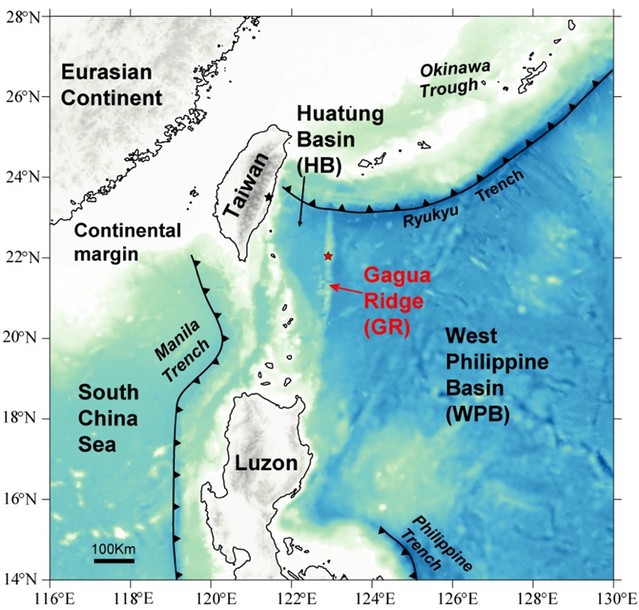Shengping Qian1*†, Xiaozhi Zhang1†, Jonny Wu2, Serge Lallemand3, Alexander R.L. Nichols4, Chiyue Huang1,5, Daniel P. Miggins6 and Huaiyang Zhou1*†
1 State Key Laboratory of Marine Geology, Tongji University, Shanghai 200092, China
2 Department of Earth & Atmospheric Sciences, University of Houston, Houston, Texas 77204, USA
3 Géosciences Montpellier, CNRS, Montpellier University, 34095 Montpellier cédex 5, France
4 School of Earth and Environment, University of Canterbury, Christchurch 8140, New Zealand
5 Department of Earth Sciences, National Cheng Kung University, 701 Tainan, Taiwan
6 College of Earth, Ocean and Atmospheric Sciences, Oregon State University, Corvallis, Oregon 97331, USA
Abstract:The tectonic history of the Philippine Sea plate is an essential piece in understanding the tectonic evolution of Southeast Asia, but it is still unclear and controversial. We present the first geochemical data obtained from lavas from the Gagua Ridge (GR) within the Philippine Sea. The GR lavas exhibit geochemical signatures typical of subduction-related arc magmatism. Plagioclase Ar-Ar ages of ca. 124–123 Ma and subduction-related geochemical signatures support the formation of GR lavas in the vicinity of an arc during the Early Cretaceous induced by subduction of the oceanic plate along East Asia. The ages of trapped zircon xenocrysts within the GR lavas cluster at 250 Ma, 0.75 Ga, and 2.45 Ga and match well the ages of zircons recovered from the Cathaysian block, southern China. Our results imply that the GR basement is partially composed of continental material that rifted away from the Eurasian margin during opening and spreading of the Huatung Basin. The depleted mantle wedge-derived magmas evolved and picked up the continental zircons during ascent. The youngest zircon ages and the GR lava Ar-Ar ages (ca. 124–123 Ma) presented in this study newly constrain an Early Cretaceous age for the Huatung Basin. Our study provides further evidence that the Huatung Basin is a remnant of a Mesozoic-aged ocean basin that dispersed from southern China during the Cretaceous. Transport of continental slivers by growth and closure of marginal seas along the East Asia margin may have been more prevalent than previously recognized.
Full Article:https://doi.org/10.1130/G48956.1



